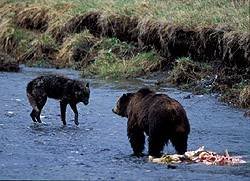
I missed it. It was May 18. No, it was not the birthday of the real Dracula, Vlad Tepes, a 15th century Wallachian Prince and a knight of the order of Dracul. May 18 was the day, in 1887, that Bram Stoker published his magnum opus, "Dracula."
It is hard to overestimate the cultural importance of that novel. Interestingly, it was not a major seller upon its initial release. But over the years, the popularity of the story has grown exponentially. Indeed, at last count, over 227 movies and innumerable books had been created featuring Stoker's undead antagonist.
Stoker's background research for his novel was extensive and spanned several years. There was much material to draw upon, as vampire myths date back several millennia, with the first known reference appearing in the writings of Mesopotamia. Vampires of mythology fed on life essence, not necessarily blood. Nor was a stake through the heart the most common way of destroying the vampire. But Stoker's novel forever altered the mythology of vampires.
Likewise, Vlad Tepes was never associated with vampirism until Stoker's novel. Tepes was one of the most blood thirsty, sadistic people ever to walk this earth. He executed over 100,000 of his foes, most of them invading Turks captured in battle. Tepes favored method of execution was impalement. Tepes had his prisoners stripped and then had a long stake with a blunted point forced perhaps a foot into the anus of the prisoner. He then had the prisoner raised up and the stake planted firmly in the ground. This method of execution was designed to cause utmost agony over hours if not days as the individual, exposed to the elements, slowly slipped ever farther down the stake. And Tepes made entire forests of the people he impaled. Indeed, one of the most famous incidents occurred in 1462 when Turkish Sultan Mehmed II led an Islamic invasion force into Wallachia, only to turn back in horror after happening upon a scene of 20,000 impaled corpses outside Vlad's capital of Târgoviște.
It is not surprising that Stoker would choose Tepes as his vampire, given the prince's royal lineage, his utter blood thirstiness and his association with horror. That said, in Romania, Tepes is celebrated as major national hero for his stand against Islamic imperialism. At any rate, on 18 May, 126 years ago, Tepes was reanimated and a long deceased Wallachian prince became the most famous undead villain of our era, the vampire Dracula.
Sunday, May 22, 2011
Dracula's Birthday
Posted by
GW
at
Sunday, May 22, 2011
5
comments
![]()
Labels: Bram Stoker, Dracula, impalement, Islam, pop culture, Romania, sadism, Turkey, Vampires, Vlad Tepes
Wednesday, June 17, 2009
This Day In History - 17 June: Dracula Attacks At Night, The Battle of Bunker Hill, & The Supreme Court Wars On Religion

Art: The Death Of General Warren At The Battle of Bunker Hill, John Trumbull
1462 – Vlad Drăcula, also known as Vlad the Impaler, was the Wallachian Prince that served as the model for author Bram Stoker's famous character, Dracula. Vlad lived in an era when his country was under constant threat from the expanding Ottoman Turks. In 1462, Sultan Mehmed II, the recent conqueror of Constantinople, raised an army of 90,000 soldiers and marched on Wallachia. Vlad, unable to stop the advancing army with his much smaller force, began a guerrilla campaign. The most famous of his engagements, in what became known as "The Night Attack," came on the night of 16-17 June when, dressed as Ottomans, his forces infiltrated the camp of Mehmed in an attempt to assassinate the Sultan. They did not succeed, but Mehmed would later withdraw from Wallachia when, according to legend, he came upon the capitol Târgovişte and there saw a forest of corpses - some 20,000 people Vlad had impaled and then left to a slow and gruesome death. Many of the victims were Turkish prisoners of war Vlad had previously captured during the Turkish invasion. The total Turkish casualty toll in this battle reached over 40,000.
1497 – The people of Cornwall rose in revolt of taxes levied by King Henry VII to fund his Scottish Wars. Henry marched on the rebels, engaging them at the Battle of Deptford Bridge on his "lucky day," June 17. Poorly led and lacking in cavalry, the rebels fought a brave but losing battle. The leaders were sentenced to be hung, drawn and quartered. Henry had their heads displayed on pikes at London Bridge.
1579 – Sir Francis Drake landed in present day California and claimed the land for England, calling it Nova Albion. His territorial claims would became important during the negotiations that ended the Mexican-American War between the United States and Mexico.
1631 – Mumtaz Mahal died during childbirth. Her husband, Mughal emperor Shah Jahan I, would spend the next 20 years building her tomb, the Taj Mahal.
1775 – Battle of Bunker Hill was one of the early battles of the Revolutionary War. The battle actually took place on Breeds Hill, occupied by colonials on the night of 16 June as part of the siege of Boston. Given the famous order "don't fire til you see the whites of their eyes," the colonials put up a determined defense. The British made three charges on the hill before capturing it when the defenders ran out of ammunition and were forced to retreat. Although the British took the hill, they suffered their heaviest losses of the war - over 800 wounded and 226 killed, including a large number of officers. The aftermath of the battle was three fold. It gave confidence to the colonials that they could stand against the British regulars. For the same reason, it gave the British pause and led to a rethinking of strategy. And lastly, it so teed off the King that it likely played a pivotal role in his refusal to entertain any more peace initiatives from the colonials to avert the war.
1789 – In France, the Third Estate - i.e., the bourgeoisie class of monarchial France - declared itself the National Assembly.
1876 – In the Battle of the Rosebud, 1,500 Sioux and Cheyenne warriors led by Crazy Horse beat back General George Crook's forces at Rosebud Creek in Montana Territory.
1877 – In the Battle of White Bird Canyon, the Nez Perce tribe defeated the US Cavalry at White Bird Canyon in the Idaho Territory.
1930 – President Herbert Hoover signed the Smoot-Hawley Tariff Act into law. This was an effort to protect American jobs during the Great Depression. It backfired, setting off a global trade war that extended and deepened the depression. Unemployment in the U.S. was at 7.8% in 1930 when the Smoot-Hawley tariff was passed, but it jumped to 16.3% in 1931, 24.9% in 1932, and 25.1% in 1933
1939 – Last public guillotining was carried out in France when Eugen Weidmann, a convicted murderer, was guillotined in Versailles outside the prison Saint-Pierre.
1944 – Iceland declared independence from Denmark and became a republic.
1963 – The United States Supreme Court ruled 8 to 1 in Abington School District v. Schempp against allowing the reciting of Bible verses and the Lord's Prayer in public schools. This was an act of pure judicial activisim and part of the left's war on religion that has been ongoing since the time of the French Revolution.
1972 – Watergate scandal unfolds as five White House operatives are arrested for burglarizing the offices of the Democratic National Committee, in an attempt by some members of the Republican party to illegally wiretap the opposition.
1994 – Following a televised low-speed highway chase , O.J. Simpson is arrested for the murders of Nicole Brown Simpson and Ronald Goldman
Births
1239 – Edward Longshanks, English king (d. 1307). He conquered most of Wales and much of Scotland during his long reign. He was recently made famous as the villain in Mel Gibson's loosely factual Braveheart.
1882 – Igor Stravinsky, the great Russian composer
1888 – Heinz Guderian, German general and one of the great tacticians of his age. He is the father of "blitzkrieg" warfare.
1943 – Newt Gingrich, politician, author, philanderer, House Speaker, what's next?
1945 – Tommy Franks, American General who led the successful invasions of Iraq and Afghanistan.
1945 – Ken Livingstone, - Red Ken, the communist multi-term Mayor of London who, thankfully, was voted out of office last year.
Deaths
900 – Fulk the Venerable, Archbishop of Rheims during the ninth century world of byzantine politics in the Holy Roman Empire. He attached his star to one of the claimants, Charles the Simple, but Fulk was soon thereafter assassinated by Count Baldwin II of Flanders.
1025 – Bolesław I the Brave, first king of Poland and one of the most remarkable politician, strategist and statesman of his age. He made a kingdom of Poland and turned it into a power in Eastern Europe.
1696 – John III Sobieski, King of Poland, the Lion of Lechistan. Western civilization and Christianity owe him a great debt. It was his strategy and leadership that led to victory over the Muslim Turks in the 1683 Battle of Vienna. Loss of that battle would have opened continental Europe to Muslim conquest.
Holidays and observances
Today is the feast day of Saint Rainier, the patron saint of Pisa and of travellers. And it is the feast day of Saint Botolph, a 7th century English abbot who is the patron saint of farming.
Posted by
GW
at
Wednesday, June 17, 2009
0
comments
![]()
Labels: art, Battle of Bunker Hill, Dracula, french revolution, History - June, indian wars, John Sobieski, SCT-religion, smoot-hawley, Vlad Tepes, watergate














































